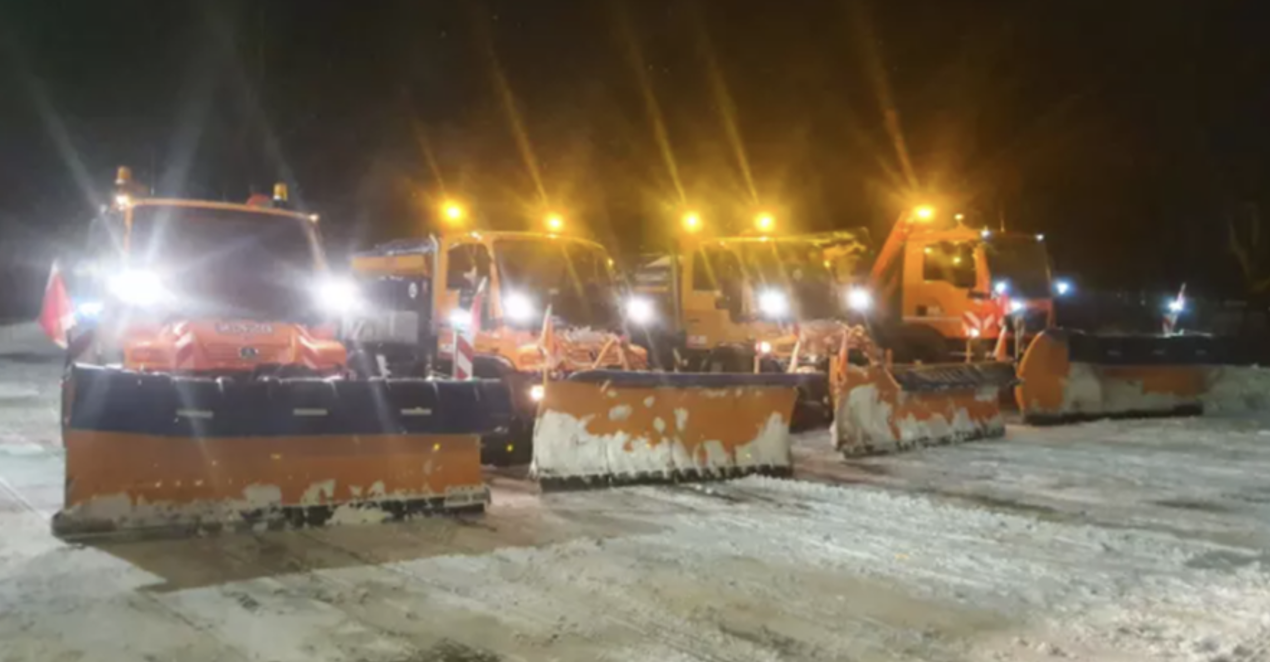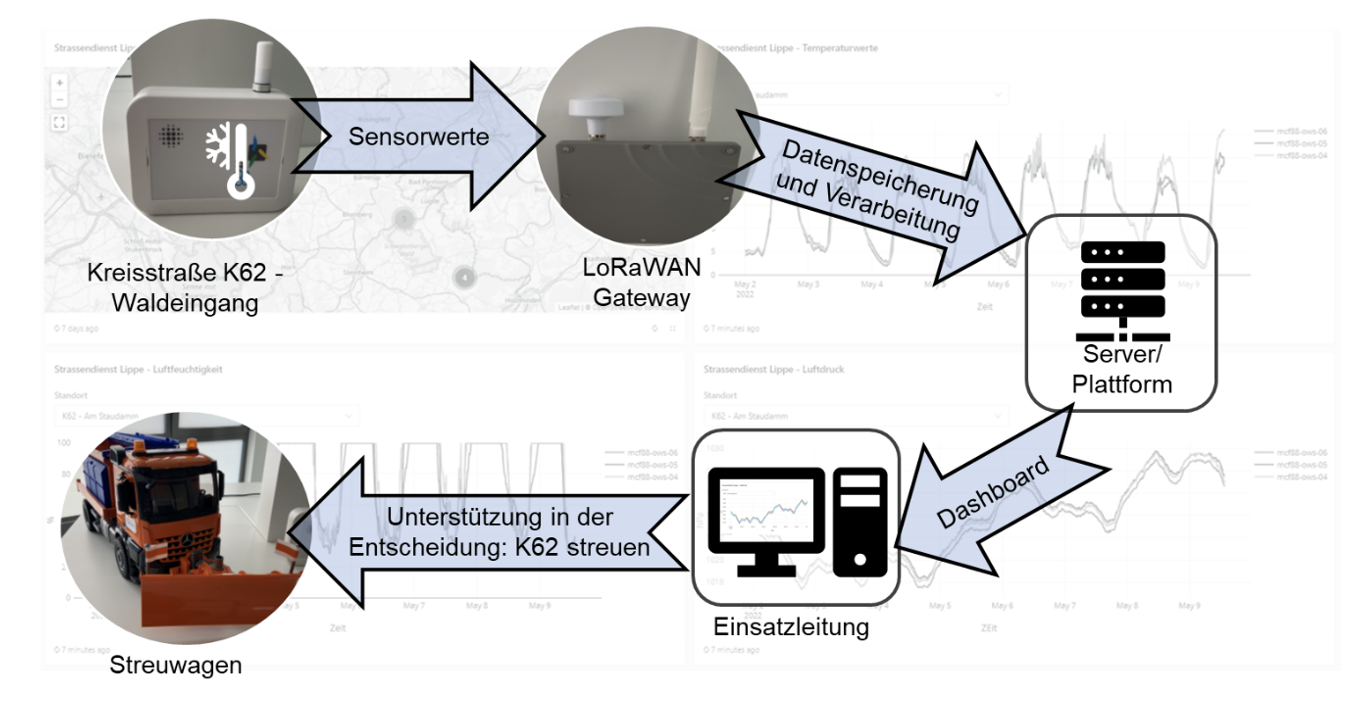Resource-saving, reliable deployment planning
In the winters of 2021, 2022 and 2023, Fraunhofer IOSB-INA and the Eigenbetrieb Straßen des Kreis Lippe carried out an IoT project in the field of road weather monitoring to provide decision support for winter road maintenance.
One of the tasks of the Eigenbetrieb Straßen des Kreis Lippe is the winter service on the district roads in Lippe. The road condition and weather information system (SWIS) from the German Weather Service, the many years of experience of the operations managers and targeted patrols serve as the basis for decision-making for the gritting and clearing service. As there is no closely meshed measuring network with local weather and road conditions, the road clearance service is sometimes dispatched prophylactically - whereas many resources could be saved with more precise real-time data.
However, the increasingly mild winters in particular mean that decisions on gritting and clearing operations have to be made on a case-by-case basis. Every day, a new decision has to be made about a possible winter service deployment. In the winters of 2021, 2022 and 2023, Fraunhofer IOSB-INA and the Eigenbetrieb Straßen des Kreis Lippe carried out an IoT project in the field of road weather detection to support decision-making for winter road maintenance.
A more closely meshed sensor network is intended to provide decision-making support for the winter road maintenance team and enable more targeted gritting operations in order to reduce material costs and relieve the burden on the environment while always ensuring road safety. In the IoT project, sensors were installed at eight selected measuring points over the three winters to record the air temperature, humidity and air pressure. LoRaWAN sensors (LoRaWAN - LongRangeWideAreaNetwork) were used, which can be operated with a battery for years. Corresponding LoRaWAN gateways for receiving the sensor data were installed at Schiedersee and Köterberg. The sensor values are visualised in a dashboard for the winter service operations manager.
‘Our partners from the district of Lippe and we are proud to have once again used IoT technologies to create a solution that works sustainably in both directions - in the direction of conserving resources and saving grit, for example, and in the direction of targeted road safety. As with other projects in the Lemgo Digital IoT real-world laboratory, the teamwork with the district of Lippe worked really well, and we would like to thank them for that,’ says a delighted Kornelia Schuba, project manager at Fraunhofer.
 Industrial Automation branch INA
Industrial Automation branch INA 


